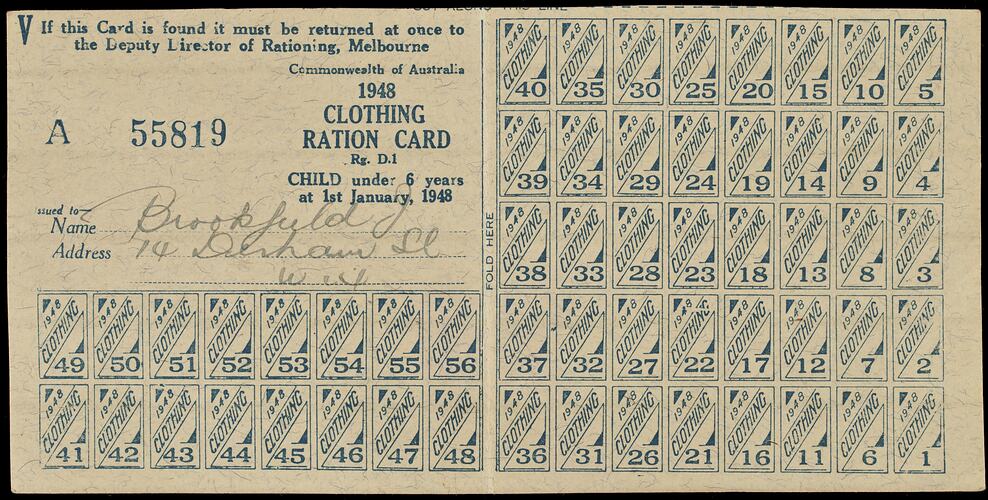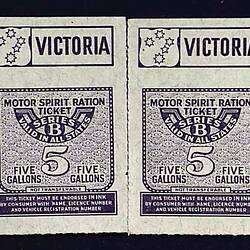Summary
Clothing ration card printed in green on cream paper, issued to J Brookfield and dated 1948. Shortages of foodstuffs, clothing and other products were part of life on the homefront during World War II. The first controls over the production and distribution of products were introduced in 1940, partly due to disruption of shipping. In 1942, after Japan entered the War, comprehensive rationing was introduced to manage shortages and control civilian consumption. The first product to be rationed was clothing, gazetted on 12 June 1942. Each adult was allowed 112 clothing coupons per year. Tea rationing was introduced the following month, followed by sugar, butter and then meat. After the War, rationing was gradually phased out. Clothing rationing was abolished on 24 June 1948. The last rationed product was tea, which ended in July 1950.
Physical Description
Cream card printed in green ink for clothing rationing. Hand-written text in black ink. Coupons intact numbers 1-56.
Significance
This ration card symbolises the homefront experiences of many Melburnians who lived through World War II. By early 1942, World War II was no longer a distant conflict for Melburnians. Japanese forces were advancing in the Pacific, and Australia's northern coastline was being bombed. In Melbourne, anti-aircraft guns were installed at Maribyrnong, and by mid-1942, 30 000 American troops were stationed in the city. Regulations clamped down on everyday life, controlling where people worked and what food, clothes and petrol they could buy. Even the number of football games and race meetings were restricted. Melbourne's factories ramped up production - especially those making munitions, aeroplanes, textiles and food. Because labour was scarce, women worked in new areas such as heavy industry and public transport. The War changed the economic, industrial and cultural landscape of Melbourne forever.
More Information
-
Collecting Areas
Public Life & Institutions, Working Life & Trades, Home & Community
-
Acquisition Information
Donation from Helen & John Brookfield, 29 Sep 2009
-
Issued By
Commonwealth of Australia, Melbourne, Victoria, Australia, 1948
-
Inscriptions
Made out to Brookfield J/14 Derham St Titled: 1948 Clothing Ration Card
-
Classification
-
Category
-
Discipline
-
Type of item
-
Overall Dimensions
160 mm (Width), 80 mm (Height)
-
Keywords
Home Fronts, Ration Coupons, Rationing, Wars & Conflicts, World War II, 1939-1945

